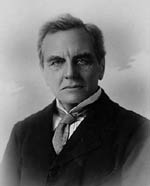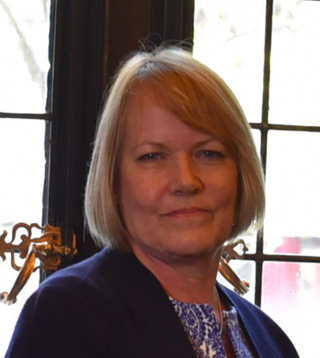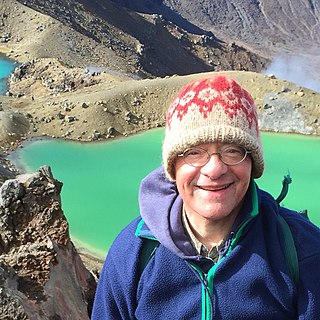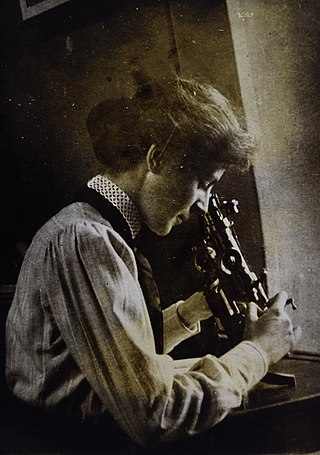Related Research Articles
Lawrence Rickard Wager, commonly known as Bill Wager, was a British geologist, explorer and mountaineer, described as "one of the finest geological thinkers of his generation" and best remembered for his work on the Skaergaard intrusion in Greenland, and for his attempt on Mount Everest in 1933.

Alfred Harker FRS was an English geologist who specialised in petrology and interpretive petrography. He was lecturer in petrology at the University of Cambridge for many years, and carried out field mapping for the Geological Survey of Scotland and geological studies of western Scotland and the Isle of Skye. He and other British geologists pioneered the use of thin sections and the petrographic microscope in interpretive petrology.

William Johnson Sollas was a British geologist and anthropologist. After studying at the City of London School, the Royal College of Chemistry and the Royal School of Mines he matriculated to St. John's College, Cambridge, where he was awarded First Class Honours in geology. After some time spent as a University Extension lecturer he became lecturer in Geology and Zoology at University College, Bristol in 1879, where he stayed until he was offered the post of Professor of Geology at Trinity College Dublin. In 1897 he was offered the post of Professor of Geology at the University of Oxford, which he accepted.
Peter John Wyllie is a British petrologist and academic.
Stephen Robert Nockolds, FRS was a geochemist, petrologist and winner of the Murchison Medal of the Geological Society of London.

Professor Dame Jane Elizabeth Francis, is the Director of the British Antarctic Survey. She previously worked as Professor of Palaeoclimatology at the University of Leeds where she also was Dean of the Faculty of Environment. In 2002 she was the fourth woman to receive the Polar Medal for outstanding contribution to British polar research. She is currently the Chancellor of the University of Leeds.
Keith Gordon Cox FRS was a British geologist and academic at the University of Oxford. He had a particular interest in flood basalts and was regarded as one of the leading experts in this area.
Jonathan David Blundy FRS is Royal Society Research Professor at the School of Earth Sciences at the University of Oxford and honorary professor at the University of Bristol.
William Alexander (Alex) Deer FRS was a distinguished British geologist, petrologist and mineralogist.

Basaltic andesite is a volcanic rock that is intermediate in composition between basalt and andesite. It is composed predominantly of augite and plagioclase. Basaltic andesite can be found in volcanoes around the world, including in Central America and the Andes of South America.

Bernard Elgey Leake is an English geologist. He is emeritus professor of geology at the University of Glasgow, was Leverhulme Emeritus Fellow at Cardiff University 2000-2002 and has been an honorary research fellow at Cardiff University since 1997.
Bernard (Bernie) Wood is a British geologist, and professor of mineralogy and senior research fellow at the University of Oxford. He specializes in the thermodynamics of geological systems, using experimental techniques. He is a prominent figure in the field of experimental petrology, having received multiple awards throughout his career and taught at several universities worldwide.
Peter Edward Baker (1937–2008) was a notable British volcanologist, professor emeritus of Igneous Petrology in the School of Earth Sciences, University of Leeds.
Sarah-Jane Barnes is a British-Canadian geologist, who is a professor at the Université du Québec à Chicoutimi and director of LabMaTer.

Mark S. Ghiorso is an American geochemist who resides in Seattle, Washington. He is best known for creating MELTS, a software tool for thermodynamic modeling of phase equilibria in magmatic systems.
Marie Edmonds is a Professor of volcanology and Earth Sciences at the Department of Earth Sciences at the University of Cambridge whose research focuses on the physics and chemistry of volcanic eruptions and magmatism and understanding volatile cycling in the solid Earth as mediated by plate tectonics. She is interested in the social and economic impacts of natural hazards; and the sustainable use of Earth's mineral and energy resources. Professor Edmonds is the Vice President and Ron Oxburgh Fellow in Earth Sciences at Queens' College, Cambridge. In 2024 she became Head of the Department of Earth Sciences, University of Cambridge, having previously been Deputy Head of Department and Director of Research for that Department.
Carol Denison Frost is an American isotope geologist, petrologist and professor. Her primary research focuses on the evolution of the continental crust and granite petrogenesis. She has spent over forty years investigating the geologic history of the Wyoming Province and the formation and geochemical classification of granite. Other contributions include isotopic fingerprinting of natural waters, including water associated with energy production. She served as Director of the Earth Sciences Division, National Science Foundation, from December 2014 to January 2018. Frost joined the British Geological Survey Board of Directors in 2023.

Mary Kingdon Heslop (1885–1955) was an Egyptian-born geologist and geographer. She was the first woman lecturer in geography at Leeds University, and one of the first women Fellows of the Geological Society of London.

Clare Warren is a British geologist who is Professor of Earth Sciences at the Open University. Her research considers metamorphic petrology and how deeply buried rocks record information about their burial and exhumation. She was awarded the Geological Society of London Dewey Medal in 2022.
Paul Barry Wignall is a British palaeontologist and sedimentologist. He is best known for his research on mass extinctions in the marine realm., particularly via the interpretation of black shales.
References
- 1 2 University of Leeds, obituary of Alastair Lumsden
- 1 2 University of Leeds, staff profile
- 1 2 3 Marjorie Wilson, Curriculum Vitae
- ↑ "Oxford University Press announces appointment of Georg F. Zellmer as editor in chief of the Journal of Petrology". 2020. Retrieved 29 December 2021.
- ↑ "The Geological Society of London - The Major John Sacheverell A'Deane Coke and Major Edward D'Ewes Fitzgerald Coke Medals". www.geolsoc.org.uk. Retrieved 30 December 2021.